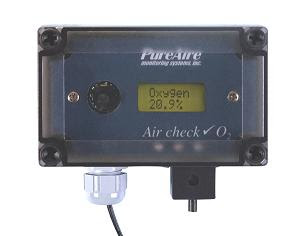For businesses that
work with inert gases or hazardous materials, glove boxes are essential. They
allow employees to safely work with sensitive or hazardous materials without
compromising either the material or their safety. While glove boxes are an effective
solution to handling inert and hazardous materials, they are not failsafe. To
ensure there are no leaks in the glove box, it's critical to pair a glove box
with an oxygen monitor.
How a Glove Box Works
A glove box, sometimes
known as a dry box, is a large box with at least one window and two ports. The
ports allow workers wearing arm-length gloves to place their hands inside the
inert environment, where they can work with hazardous materials or inert
gases, such as argon or nitrogen.
The interior of the
glove box is filled with an inert gas -- usually nitrogen, although it could be
argon or helium if the materials used inside the box react with nitrogen. While
the glove box environment is intended to be closed, small amounts of oxygen can
seep through the glove ports. Thus, it's essential that the glove box be purged
nightly.
There's an antechamber
on one side of the glove box. This allows you to place materials in the
chamber, then open the interior door and bring them into the glove box
environment. To prevent the insert gas inside from seeping out through the
antechamber, you must never have both the interior and exterior door open at
the same time.
Inert gases, such as
nitrogen and argon, displace oxygen. If these gases were to leak into the air via
the antechamber doors or through a hole in a defective glove box, it would push
oxygen out of the room. Oxygen levels would begin to drop, eventually falling
below the OSHA threshold.
When oxygen levels
drop below the OSHA threshold, it can cause respiratory and cognitive problems,
as well as death via asphyxiation. To protect employee safety in a glove
box environment, it's critical to use oxygen monitors onsite.
How an Oxygen Monitor Protects Your
Workers
While your staff might
see the antechamber doors open and understand that a leak has occurred, most
leaks are undetectable until it is too late.
Inert gases have no
color or odor, so there is no way for someone working onsite to know at a
glance or sniff there's been a leak. Meanwhile, the air in the room would
slowly lose oxygen, eventually leading to an oxygen deficient environment that
places your employees at risk of death by asphyxiation.
A wall-mounted oxygen
monitor samples room air 24/7. The monitor remains silent if there's sufficient
air in the room. If there is a leak of nitrogen, for example, and oxygen levels
fall, the monitor will sound an alarm and flash lights, so workers can see and
hear there is a problem.
Your employees will be
able to leave the room before suffering adverse health effects. Staff will also
be able to complete shifts with less stress when they know the environment is
safe, because they trust the oxygen monitor is working properly.
PureAire's oxygen
monitors feature long-lasting zirconium sensors. Once installed, these oxygen
monitors measure the oxygen in the air for 10 or more years, without needing
annual calibration or maintenance. The monitors are unaffected by sudden shifts
in barometric pressure or thunderstorms. The digital display provides
legible, updated oxygen readings so employees can check ambient oxygen
levels. PureAire's oxygen monitors can be used in confined spaces and
in temperature extremes as low as -40 Celsius. All PureAire oxygen
monitors come with a three year warranty for your protection. Review
specifications or learn more about oxygen monitors from PureAire by
visiting www.pureairemonitoring.com












